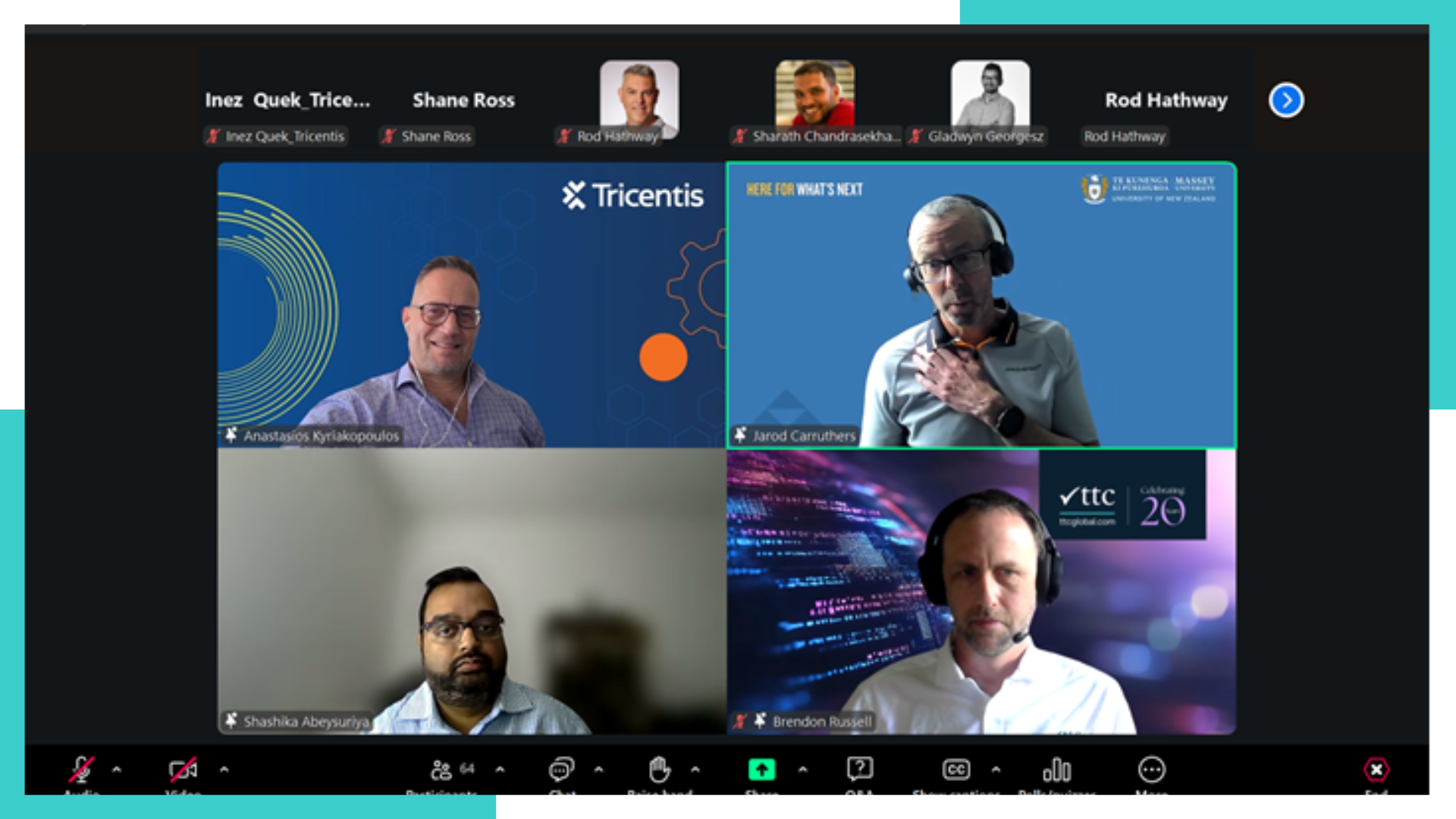From Manual to Automated Testing: The Art of the Possible
Webinar Recap | Tricentis & TTC Global New Zealand
There are two sayings often quoted:
- “You can’t teach an old dog new tricks.”
- “You’ll never be younger than today to start learning something new.”
While the first is familiar, the second resonates more deeply—especially when it comes to evolving testing practices. This was clearly demonstrated in our recent webinar, From Manual Testing to AI-Augmented Quality Engineering via Model-Based Test Automation, held on Thursday, 25th September.

The panel featured insights from Massey University and Fletcher Building, showcasing how low-code/no-code test automation helped both organisations reduce testing costs and increase release velocity—without replacing their core testing teams. At TTC Global New Zealand, we recognise that many internal teams still rely heavily on manual testing. While manual testing has its place, automation often feels out of reach, especially when preserving team knowledge and corporate IP is critical. And without automation, AI adoption seems even further away.
The webinar proved otherwise.
Massey University had previously dabbled in automation—one contractor using Selenium and a few open-source scripts. When the contractor left, the scripts quickly became obsolete. Fletcher Building, meanwhile, needed an enterprise-grade platform to support integrated, end-to-end processes. Both organisations were deeply reliant on their internal teams and unsure if a shift to automation was feasible without losing valuable business knowledge.
Yet both made the transition successfully—with their existing teams. No loss of IP. No disruption. What stood out was how quickly and smoothly the change occurred.
Tricentis Tosca, introduced to New Zealand by TTC Global over 13 years ago, was the enabling technology. As the first low-code/no-code test automation platform in the region, Tosca has built a strong user community supported by free online education and certification. Organisations like Massey and Fletcher have used Tosca to move from manual to automated testing with impressive results.
However, the webinar wasn’t just about automation; it was about unlocking AI potential through Tosca:
- Model Context Protocol (MCP) Server: Enables AI tools like Cursor, GitHub Copilot, and Claude Desktop to interact with linked systems for complex workflows.
- Self-Healing Test Scripts: TTC Global recently used this feature to manage SAP Fiori patch changes, significantly reducing maintenance and accelerating feedback loops.
- Tosca Co-Pilot: Offers built-in AI capabilities such as explaining tests and failures, and generating TQL queries from natural language.
- Automation Agent: Automatically creates Tosca automation from test cases and domain context, asking for user input when needed. TTC Global expects this to reduce automation effort by 40% and broaden who can contribute.
A lot was covered in the session!
So, if you’re a manual tester or a Test Practice Manager wondering whether automation—and AI—is within reach, the answer is yes. Watch the webinar recording, or better yet, speak with the TTC Global team.
You can even connect with Massey University or Fletcher Building to hear their stories firsthand.
- Transitioning from manual to automated testing is easier than you might think.
- AI productivity tools are accessible once automation is in place.
- Tricentis Tosca bridges today’s testing needs with tomorrow’s intelligent automation.




